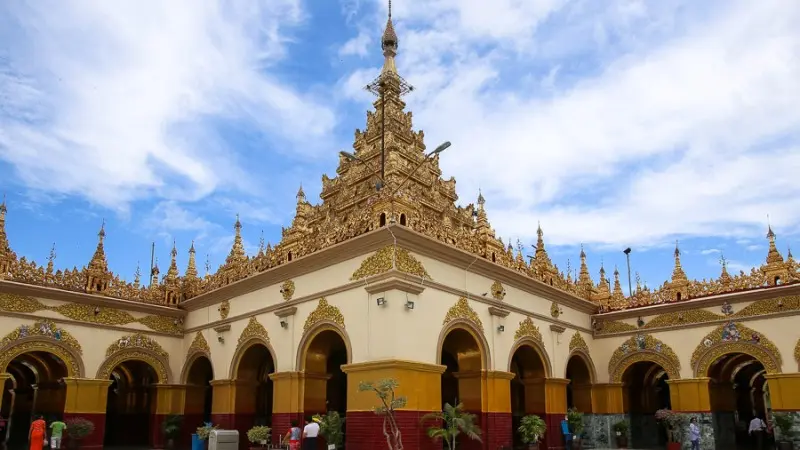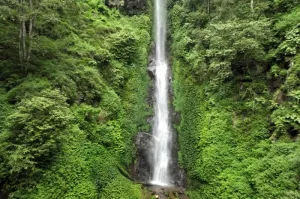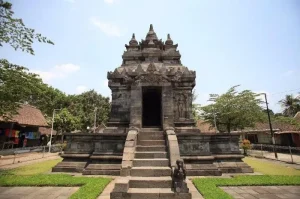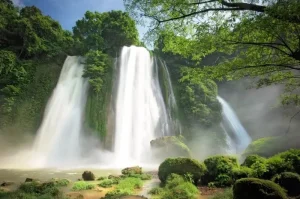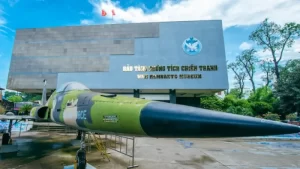History
The Mahamuni Temple, also known as Mahamuni Pagoda, is a significant site of Buddhist pilgrimage in Myanmar and is famed for housing one of the country’s most revered Buddha images. The temple’s history intertwines with the spiritual traditions and the cultural heritage of Myanmar, making it a fascinating narrative that extends beyond centuries.
As per the folklore, the revered Mahamuni Buddha image that graces the temple is believed to have been carved during Buddha’s own lifetime when he paid a visit to Dhanyawadi city in Arakan in 554 BC.
Legend has it that Buddha bestowed life onto the finished image by breathing upon it, thereby infusing it with his spiritual essence. Consequently, the image has been celebrated as a living embodiment of the Buddha himself since then.
The Mahamuni image, through the course of history, has endured numerous invasions and wars. In the 18th century, during the invasion of the Arakan kingdom by the Burmese King Bodawpaya, the image was relocated to its current location in Mandalay. The Mahamuni Temple was then built to house this venerated image, becoming a major center of Buddhist devotion.
Why Visit
Mahamuni Temple stands as an emblem of spiritual significance, historical intrigue, and architectural beauty. The temple is most renowned for its central Buddha image, often referred to as the Mahamuni Buddha, that draws thousands of devotees and tourists alike.
One of the unique aspects of the Mahamuni Buddha image is the ritual of daily face-washing. Every morning, the senior monk washes the face and brushes the teeth of the Mahamuni Buddha image, a ritual witnessed by hundreds of devotees daily.
Furthermore, over the years, male devotees have applied gold leaves to the Buddha image as a mark of reverence. This has resulted in a thick layer of gold on the image, excluding the face, adding to the distinctive allure of the Mahamuni Buddha.
Location and Route
Mahamuni Temple is located in the southern part of Mandalay, the second-largest city in Myanmar. Its position makes it easily accessible from different parts of the city.
The Mandalay International Airport offers numerous domestic and international flights. From the airport, the temple is approximately a one-hour drive. Mandalay also has excellent road and rail links to other parts of Myanmar, making it relatively straightforward for travelers to reach the city.
Once in Mandalay, visitors can take a taxi, a rickshaw, or even rent a bicycle to reach the Mahamuni Temple. Given the temple’s significance, it features prominently on almost every tour itinerary in Mandalay.
When to Visit
Mahamuni Temple is open for visitors year-round. However, the best time to visit Mandalay, considering the weather, is between November and February. During these months, the weather is cooler and drier, making it comfortable for sightseeing.
For those interested in witnessing local traditions, visiting during the early morning hours provides an opportunity to observe the daily face-washing ritual of the Mahamuni Buddha image.
What to See
The primary attraction within the Mahamuni Temple is undoubtedly the Mahamuni Buddha image. The 4-meter high seated Buddha, covered in a thick layer of gold leaf, is a captivating sight. The daily face-washing ritual, usually conducted around 4:30 AM, offers an immersive experience into the devotional practices at the temple.
Beyond the central shrine, the temple complex also houses several ancillary shrines and pavilions. These include the six bronze Khmer figures, believed to have healing properties. Devotees often rub a part of these figures corresponding to their own aches and pains.
Additionally, the complex includes a museum exhibiting a collection of ancient Buddhist texts, offering insights into the spiritual history and religious practices in the region.
In essence, Mahamuni Temple is more than just a religious site. It is a spiritual sanctuary, a historical monument, and a cultural epitome that offers a compelling glimpse into Myanmar’s rich heritage and Buddhist traditions.
Whether you’re a spiritual seeker, a history enthusiast, or a culture explorer, a visit to Mahamuni Temple provides an experience that resonates deeply and lingers long after you’ve left its hallowed grounds.
